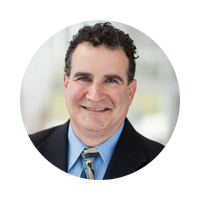Once & Future Planet
How does understanding Earth's past help us plan for the future?
Explore how life began and evolved and the ways in which its emergence and diversification has shaped our Earth and vice versa. Learn about our world and other worlds, and how humans affect this planet and its future. Frame questions and engage in primary research – field work, laboratory analyses, writing – to use the scientific method and to study the world we live in.
You can expect to:
- Explore the natural world through field excursions on-campus and to the Smithsonian Natural History Museum.
- Conduct a primary research project that collects new data and analyzes it as a community.
- Learn how the environment and life have evolved together over time.
- Work in teams to research and present on the role of methane in climate and the world today.
Community Course
GEOL124: Evolution of Life and Environment on Planet Earth. Topics covered will begin with the Big Bang and the search for life’s origins. You will then explore how life and environment evolved through Earth’s history, and what that means for future interactions. As part of this course, you will conduct on a primary, community research project and develop skills in analysis, hypothesis testing, and scientific reporting. This course meets the General Education requirements of I-Series and Natural Sciences.
Carillon Faculty
 James Farquhar is a professor in the Department of Geology and the Earth System Science Interdisciplinary Center who works at the interface between chemistry, biology, and geology. He has been a faculty member at the University of Maryland since 2001 and is best known for research that tracks the evolution of the atmosphere through geologic time and its connections to the appearance of photosynthetic oxygen 2.4 billion years ago. Professor Farquhar is now spearheading a large project to study methane in today’s environment and its chemical and biological cycling. This research and this facility form part of the backdrop for Carillon Communities GEOL124. He is on a research team that recently
James Farquhar is a professor in the Department of Geology and the Earth System Science Interdisciplinary Center who works at the interface between chemistry, biology, and geology. He has been a faculty member at the University of Maryland since 2001 and is best known for research that tracks the evolution of the atmosphere through geologic time and its connections to the appearance of photosynthetic oxygen 2.4 billion years ago. Professor Farquhar is now spearheading a large project to study methane in today’s environment and its chemical and biological cycling. This research and this facility form part of the backdrop for Carillon Communities GEOL124. He is on a research team that recently
received a University of Maryland Grand Challenges institutional grant:
Addressing Climate Challenges for a Sustainable Earth.

Jay Kaufman's research has focused on the determination of changes in the isotopic composition of the oceans through time, by the analysis of stragraphic suites of little-altered carbonate rocks. Thus far, most of these studies have centered around Neoproterozoic (ca. 1000-544 million-year-old) sedimentary successions in Svalbard/East Greenland, Namibia, arctic Canada and Alaska, India, and the western USA. Temporal variations in C and Sr isotopes can be used as stratigraphic tools within and between basins, and through detailed correlations allow us to order key tectonic, biogeochemical, and
paleoenvironmental events in Earth history.
Once & Future Planet Alumna
Tytrice Faison ’22 took part in the Once & Future Planet community in 2017-18. As part of a research team that included geologists from the University of Maryland, George Mason University, and the Norwegian oil and gas company Equinor, she developed a new framework for analyzing paleontological and biogeochemical data. These findings may carry lessons applicable to the modern climate crisis and demonstrate links between sea level, climate, ocean chemistry, and biotic disruption.
Read more about her work in this article.

